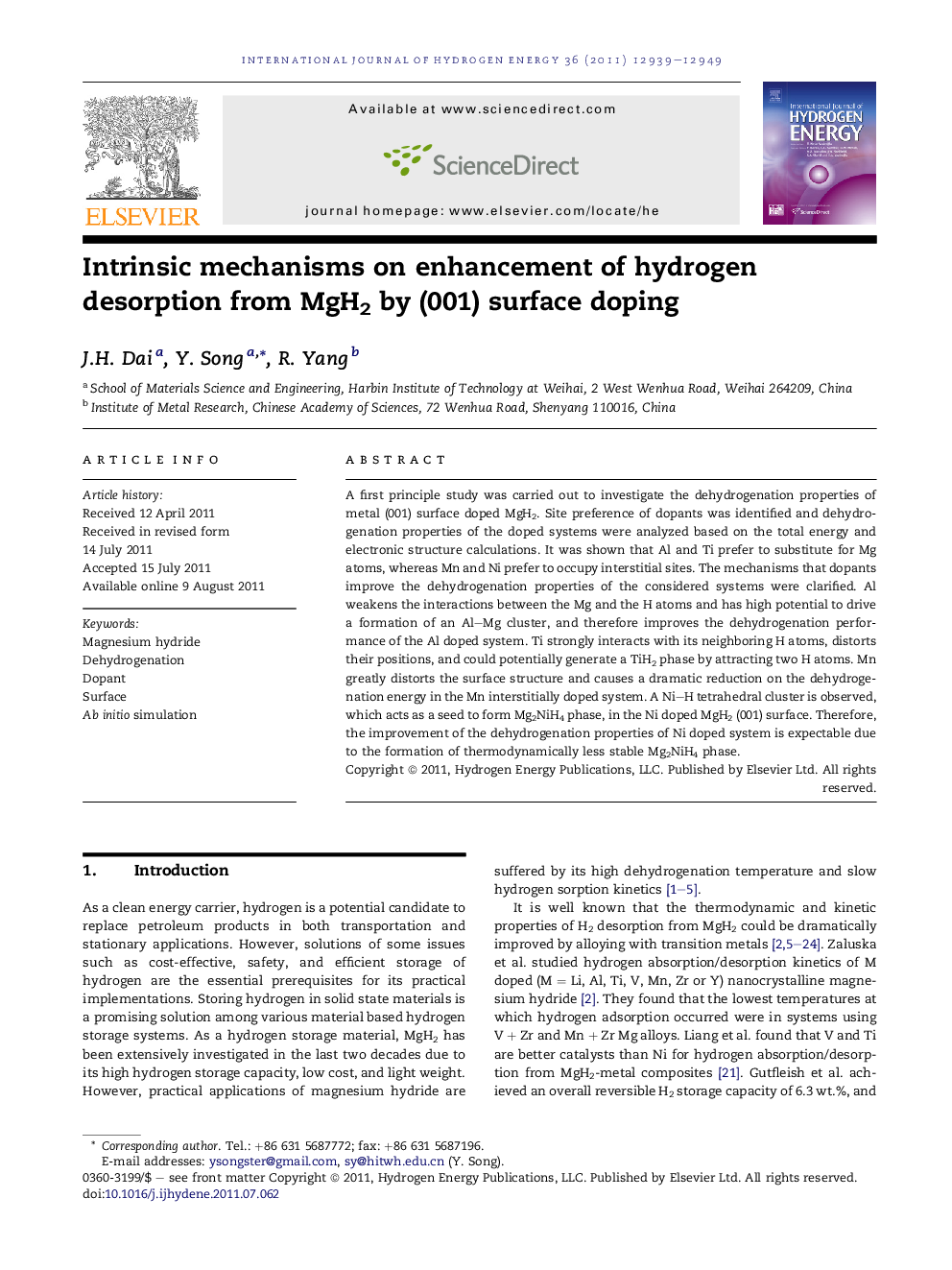| کد مقاله | کد نشریه | سال انتشار | مقاله انگلیسی | نسخه تمام متن |
|---|---|---|---|---|
| 1271959 | 1497573 | 2011 | 11 صفحه PDF | دانلود رایگان |

A first principle study was carried out to investigate the dehydrogenation properties of metal (001) surface doped MgH2. Site preference of dopants was identified and dehydrogenation properties of the doped systems were analyzed based on the total energy and electronic structure calculations. It was shown that Al and Ti prefer to substitute for Mg atoms, whereas Mn and Ni prefer to occupy interstitial sites. The mechanisms that dopants improve the dehydrogenation properties of the considered systems were clarified. Al weakens the interactions between the Mg and the H atoms and has high potential to drive a formation of an Al–Mg cluster, and therefore improves the dehydrogenation performance of the Al doped system. Ti strongly interacts with its neighboring H atoms, distorts their positions, and could potentially generate a TiH2 phase by attracting two H atoms. Mn greatly distorts the surface structure and causes a dramatic reduction on the dehydrogenation energy in the Mn interstitially doped system. A Ni–H tetrahedral cluster is observed, which acts as a seed to form Mg2NiH4 phase, in the Ni doped MgH2 (001) surface. Therefore, the improvement of the dehydrogenation properties of Ni doped system is expectable due to the formation of thermodynamically less stable Mg2NiH4 phase.
► Occupation energies of dopants in MgH2 (001) surface are lower than 1.5 eV. 2.
► Al and Ti substitute for Mg atoms, whereas Mn and Ni occupy interstitial sites.
► There is high potential to form a second phase in the doped systems.
► Desorption property is improved by surface distortion & formation of second phase.
Journal: International Journal of Hydrogen Energy - Volume 36, Issue 20, October 2011, Pages 12939–12949